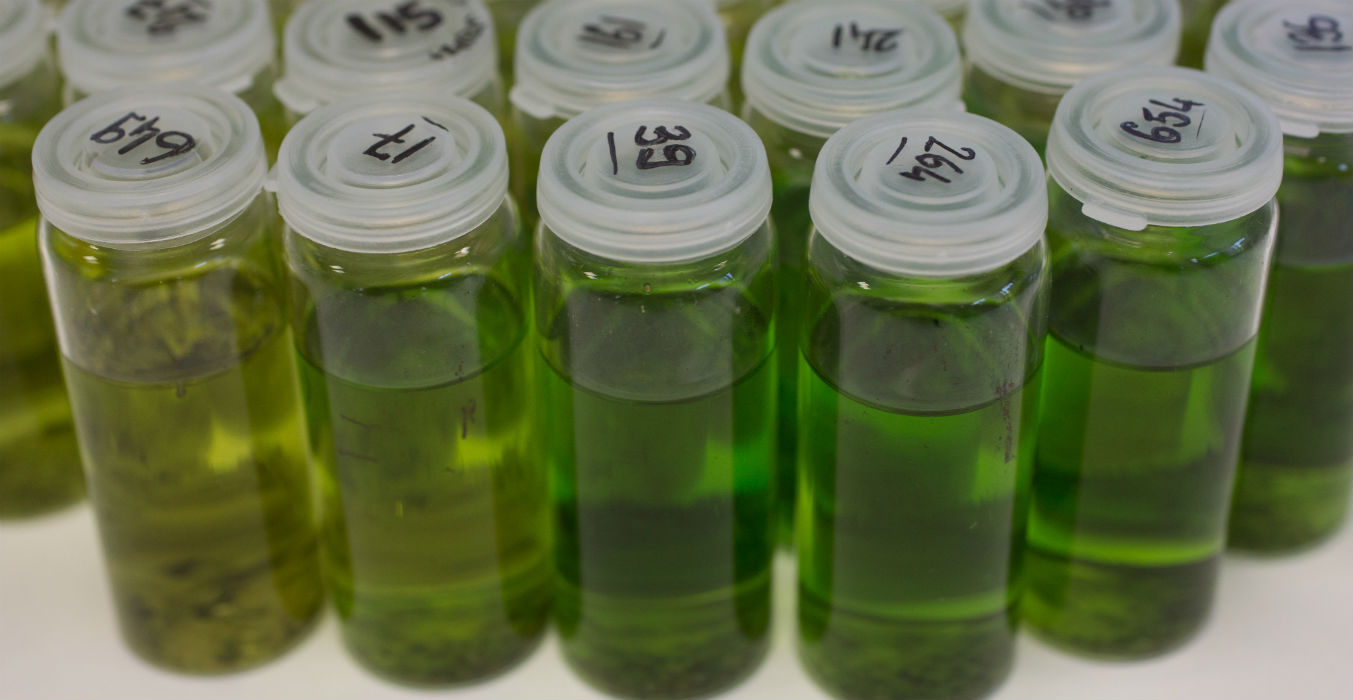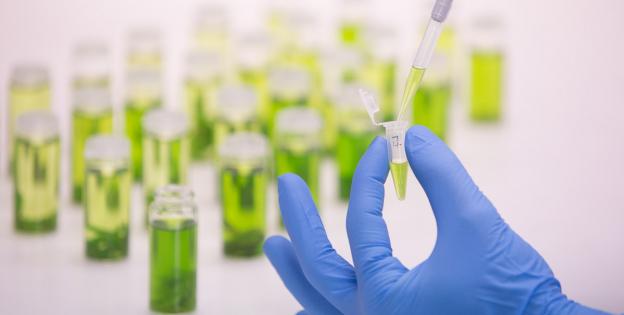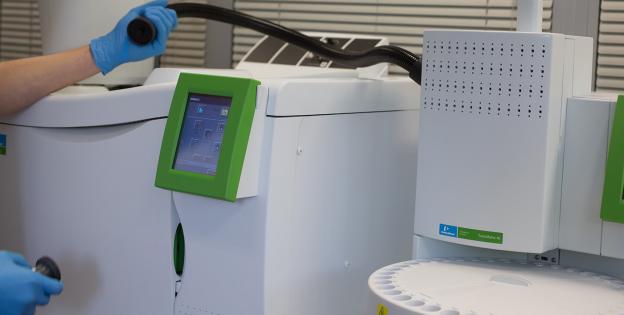- The Dinafem Seeds laboratory team plays a part in all our breeding processes, and is behind every new strain we launch.
- The lab techs collect representative samples of the relevant plants, which are then treated and analysed in order to identify the characteristics of the different strains.
- At Dinafem Seeds, samples are analysed by two methods: liquid and gas chromatography. But in order to ensure reliable results, these need to be processed first.
- How are samples processed before they can be analysed? What do laboratory technicians look for? How do they extract the data necessary to determine the cannabinoid and terpene profile of the different strains?
- Find all the answers below!

As explained in the first post on the Dinafem Seeds laboratory, our work revolves around four key areas: collection of samples, processing of samples, analysis of samples and data extraction and drawing of conclusions. The aim of these scientific procedures is to aid decision making in breeding and strain stabilisation processes, as well as in the reporting of the characteristics of our varieties. In this second post on the laboratory, we'll go into more detail on how cannabis samples are processed at Dinafem.
Sample processing is the second step in testing cannabis strains. This is carried out after collecting the samples, and varies according to the active substance to be analysed – terpenes are analysed by gas chromatography and cannabinoids by liquid chromatography. Keep scrolling to find out how cannabis samples are processed in order to obtain results on both cannabinoids and terpenes.
Processing of samples for cannabinoid analysis
Drying and cleaning of buds
The samples, which are collected form different parts of the plant in order to ensure representative results – e.g. from the centre, the inside, the outside and the base of the plant – need to be processed before they can be analysed. For cannabinoids, the active substances in cannabis that interact with the body's endocannabinoid system, the process is as follows.
First of all, the buds are dried and left at a temperature of 50 ºC for 16 hours in order to remove residual moisture. Next, the leaves and twigs are eliminated until just the bud is left, otherwise the results on the cannabinoid content could be inaccurate as cannabinoids are unique to the flowers and are not found in the leaves or stems.
For the analysis of cannabinoids by liquid chromatography, the plant sample needs to be converted into a liquid
If cannabinoid-free plant parts such as leaves and twigs were not removed, the cannabinoid content could be understated, as the sample would not be entirely cannabinoid-reach – let's not forget information on cannabinoid concentration is as important as information on cannabinoid type.
Once dried, the next step is to properly clean the sample. This involves removing the leaves and sifting the buds in such a way that just the plant material that passes through the filter is analysed. By doing so, the twigs and all the plant material other than the actual bud is eliminated, and a homogenous powder is obtained. This ensures the sample is free from twigs, leaves and seeds, and can thus be considered representative of the plant's cannabinoid content.
Vial preparation
Once the sample has been reduced to tiny particles, the next step is to transfer the cannabinoids from the solid plant sample to a liquid sample, which is essential for liquid chromatography. This is done by introducing the powder in a vial containing ethanol, which allows the cannabinoids to be dissolved, changing state from solid to liquid. Ethanol and not water is employed because cannabinoids are fat soluble rather than water soluble.
In order to ensure the cannabinoids are correctly transferred to the liquid, the sample is subjected to ultrasonic bath, and is then centrifuged so that the particles settle to the bottom of the vial. This allows the cannabinoids to be converted to liquid form, a millilitre of which is transferred to the chromatography vial and analysed by liquid chromatography.
Dilution of the sample
Cannabis is much richer in cannabinoids (up to 25%) than terpenes (up to 5%). Accordingly, the liquid sample is diluted to avoid saturation and ensure comparable concentrations of both components. This is done by transferring a small amount of liquid to the chromatography vial, where additional ethanol is added to make up to the one millilitre mark.

Processing of samples for terpene analysis
Also found in other plants, terpenes are the organic compounds that give cannabis its signature smell. Thus, terpene analysis is utilised to examine the aroma of strains, both in terms of type and intensity.
This can be done either by liquid or gas chromatography, but because terpenes are volatile compounds, at Dinafem we analysed them by gas chromatography. The pre-processing is the same as for cannabinoid analysis, with the difference that the buds are not dried because terpenes are analysed fresh.
This is because if not correctly dried, terpenes may evaporate or be oxidised, leading to inaccurate results in terms of terpene type and content. So, just as for cannabinoids, the samples are cleaned, diluted in ethanol and subjected to ultrasonic bath, but are not dried, significantly shortening the process. The results, however, are corrected by measuring the humidity of a simultaneously collected sample.
Once the terpenes have been extracted, the liquid samples are sonicated, centrifuged and transferred to the gas chromatography vial. The chromatograph, previously calibrated with reference material, does the rest. But this we will explain in our next post.





Comments from our readers
Read comments in other languages:
Did you like this post?
Your opinion about our seeds is very important to us and can help other users a lot (your email address won't be made public).